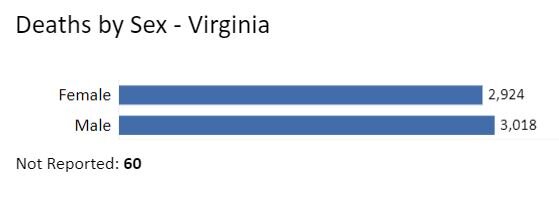Why Is No One Hyperventilating about Systemic Sexism in Healthcare?
Written for Bacon’s Rebellion by James A. Bacon
A Virginia male who contracts the COVID-19 virus is 11% more likely to die from it than a Virginia female, demonstrating the pervasive sexism embedded in Virginia’s healthcare system. Despite the fact that the life expectancy at birth of a male in the commonwealth is only 74.7 years compared to 80.0 years for a woman, the Northam administration is doing nothing — NOTHING, I tell you! — to correct this grotesque imbalance.
Readers who know me well can probably guess that I don’t really think the healthcare system is systemically sexist. Regardless of the disparity in statistical outcomes, I think structures are in place to ensure that males and females enjoy equal access. And I think hospitals and providers do their level best to give everyone quality care.
Consider this an illustration of “Lies, Damn Lies, and Statistics,” as I shall explain.
Let’s start with the fact that, according to the Virginia Department of Health dashboard, 238,387 females have been tested positive and 219,264 males have been confirmed positive for COVID-19. Yet more men have died from it (3,018), than women have (2,924).
Put another way, 1.37% of all men who have tested positive have died from it compared to only 1.22% of women. Thus, the likelihood of a male expiring from the virus is 11% higher than for a female.
All the data is accurate, and so are the mathematical calculations.
But there is another way of looking at the data. If we look at the disparities in the percentage of Virginians who recover from the virus, what do we get?
We find that 98.63% of males recovered from the virus, compared to 98.8% of females. From that perspective, the male-female discrepancy is less than two-tenths of one percent (0.0017%).
In other words, the discrepancy is insignificant. Insofar as there is a difference in mortality rates, it most likely can be explained by medical factors (prevalence of pre-existing conditions) or cultural factors (willingness to “tough it out” rather than consult a doctor).
Bacon’s bottom line: Always, always, always view statistics with a grain of salt. They may be 100% accurate, yet biased in the way they are presented. Assess the agenda of the person or organization quoting the statistics and understand how they might be skewing the presentation.




